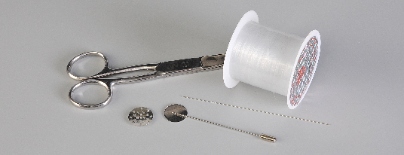Today, we will show you how to combine PRECIOSA pressed beads with a popular shape which is reminiscent of a flower's petal and the elongated, slender PRECIOSA Thorn™ bead. The rudbeckia flower sewn onto a metal base plate can be attached to a pin, a round broach base, a hair clip or the flat surface of a ring.
She is able to switch from luxurious and extravagant fashion show pieces to the preparation of hobby projects,
Learn More16 mm perforated metal base plate, eight holes around the circumference; a pin with a flat base, a 0.20 mm nylon line; a thin needle; scissors; glue for non-absorbent material

Share this project with your friends
This website uses cookies
PRECIOSA ORNELA, a.s. hereby informs you that its website uses cookies You can find more information about our cookies and how your data is processed in the privacy statement. We request your consent to use cookies specified below.